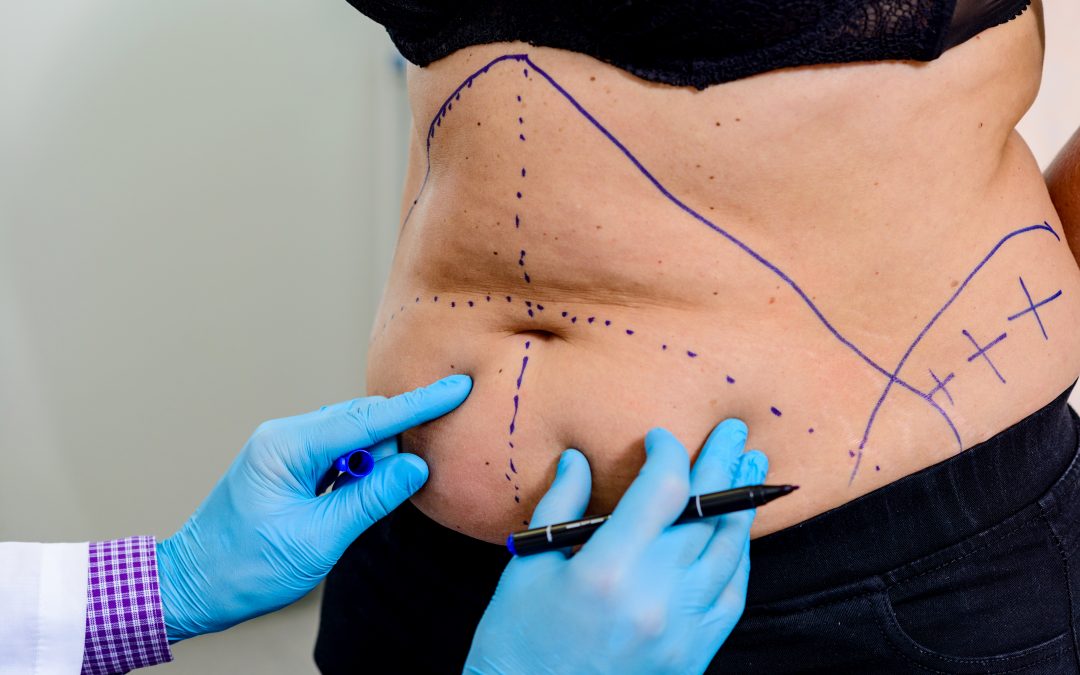Sometimes, excess skin and fat in the area around the stomach cannot be addressed through exercise and dieting alone. One of the most common causes is weight loss, which can in turn occur in women after pregnancy. A tummy tuck is a cosmetic solution to excessive amounts of fat and skin around the abdomen. In this post you can find detailed information around tummy tucks, including the surgical approach, aims of the procedure, and recovery.
What is the aim of an abdominoplasty?
Tummy tuck surgery, or abdominoplasty, is a straightforward aesthetic procedure that seeks to improve the overall shape of the abdomen area. This is achieved through the removal of excess fat and skin around the tummy, along with the tightening or repair of abdominal muscles when needed. Once the tummy tuck has been completed, the hope is that patients will benefit from greater body confidence as well as some functional improvements.
Be advised that a tummy tuck procedure is not intended for those who are overweight. If you’re unsure whether you’re an ideal candidate for an abdominoplasty, please request a consultation with a LASE surgeon.
Tummy tuck surgical procedure
During an abdominoplasty procedure, the surgeon will first make an incision across the lower abdomen. This usually runs from hip to hip to allow maximum access, with a second incision freeing the belly button from the surrounding tissue. Once the skin has been separated from the abdominal wall, any excess fat and skin can be removed. Following this stage, the abdominal muscles will be realigned if necessary. Finally, a new hole is made for the belly button and the remaining skin is pulled together and stitched in place.
There can be variations on tummy tuck surgery depending on the circumstances. A ‘mini’ or partial tummy tuck could be recommended for those with limited areas of loose skin in the lower abdomen only. This procedure is often intended to address the lower part of the tummy close to the pubic area. It will also typically leave a smaller scar and leave the belly button unaffected as a result. A ‘fleur de lys’ tummy tuck is used commonly cases in significant weight loss and skin laxity. It has the same scars as a routine abdominoplasty with an additional vertical scar in the midline to achieve maximal skin removal
This surgery is often combined with liposuction and liposculpture surgery to further enhance the contours of the abdomen. Abdominoplasty of any kind is typically performed under general anaesthetic.
How long does it take to recovery from a tummy tuck?
In most cases, it takes around six weeks to make a full recovery from tummy tuck surgery. During this time, it’s recommended that you take a couple of weeks off work, avoiding exercise and other strenuous activities for at least a month. A compression garment will be worn to aid in healing, reduce swelling, and reduce the risk of fluid build-up. Patients should also take care when they sleep to avoid posture and movements that might place strain on the stitches. The recommendations for aftercare following a tummy tuck will depend on a number of factors, such as age, illness, and aspects of your medical history. It’s normal to experience some discomfort in the days following the surgery.
Your cosmetic clinic Newcastle
Taking the step to pursue cosmetic surgery can be intimidating for many. You might be worried about scars or possible side effects, even after doing research online. So while we aimed to provide as much clarity as possible in this blog regarding abdominoplasty, there may still be questions that relate to your personal health history. At LASE Cosmetic, our professional surgeons are here to support you. Contact us to help put your mind at ease, whether it’s ahead of a surgical or non-surgical treatment.


Recent Comments